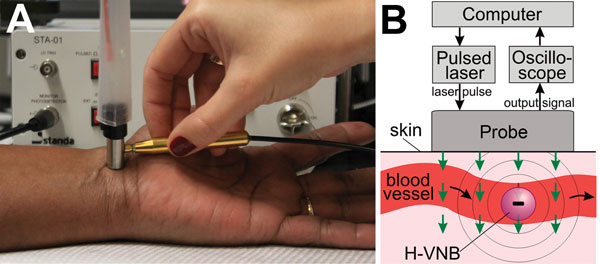Volume 21, Number 7—July 2015
Research
Transdermal Diagnosis of Malaria Using Vapor Nanobubbles
Figure 1

Figure 1. A) Experimental laboratory prototype of a malaria diagnostic device with the pulsed laser and the integrated probe shown being scanned across a human wrist. B) Functional diagram of the prototype and the principle of transdermal optical excitation and acoustic detection of vapor nanobubbles around hemozoin in malaria-infected cells exposed to the laser pulses (green arrows). H-VNB, hemozoin-generated vapor nanobubble.
Page created: June 12, 2015
Page updated: June 12, 2015
Page reviewed: June 12, 2015
The conclusions, findings, and opinions expressed by authors contributing to this journal do not necessarily reflect the official position of the U.S. Department of Health and Human Services, the Public Health Service, the Centers for Disease Control and Prevention, or the authors' affiliated institutions. Use of trade names is for identification only and does not imply endorsement by any of the groups named above.